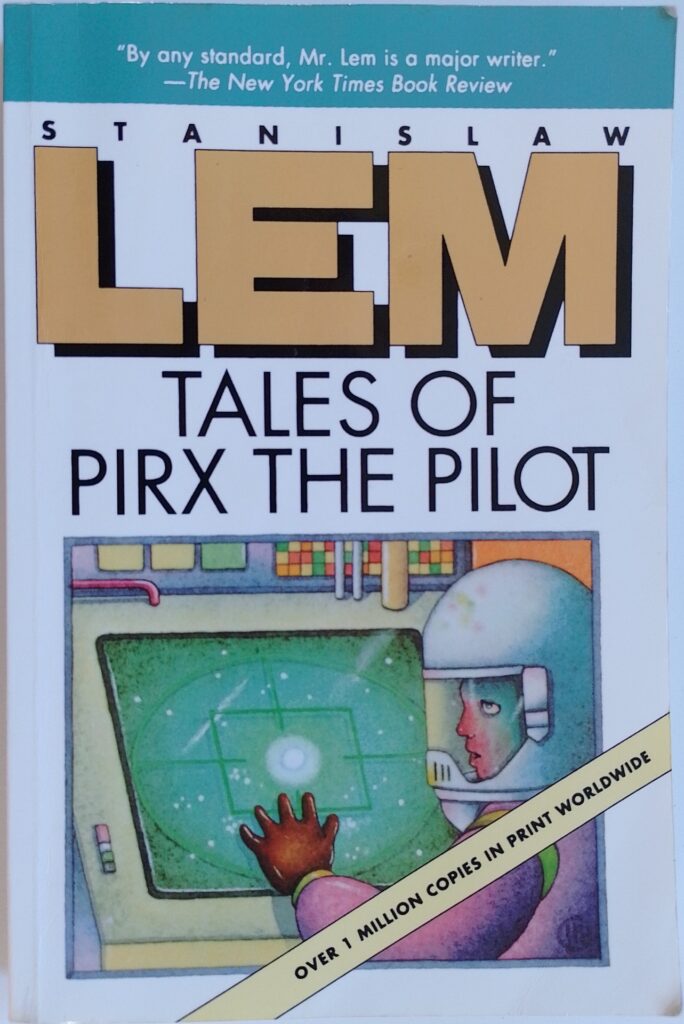First published 1968. Harcourt, paperback, 1990, translated by Louis Iribarne, 1979, pp 206, c,75,000 words.
What a good writer Lem was. Here, there are some beautiful descriptive passages, original stories and an engaging hero who is neither a superman nor an idiot. The style is light hearted, but Lem explores some serious themes of space travel and human behaviour. Take this description from the start of the last story Terminus: ‘A predawn fog hugged the ground, spectral white in the half-light. Diesel trucks, announced by silvered columns of exhaust, tore along the asphalt highway with their tires humming, their taillights flashing bright red as they rounded the bend.’
This is a collection of five stories concerning the adventures of a spaceship pilot. We first meet Pirx when he is a student and struggling to qualify. Later we find him variously on a dull assignment that is enlivened by a mystery, out on patrol as a fully qualified pilot, on his way to another assignment on a luxury space liner, and finally captain of a massive, but ancient, freighter. None of the episodes exude the glamour that Pirx perhaps hoped to find, but he is a resourceful, thoughtful and amusing guide to the world of routine and not-so routine space travel.
The spaceships are wonderfully contrived, full of 1960’s technology, and usually in less than perfect working order. The moon is a tourist destination for the rich and divided into national zones with scientific research stations. Mars is in the early stages of being settled. There is clear development in space technology and occupation as Pirx ages. All the science and technology is credible and well thought through. Rockets are largely powered by nuclear engines of some sort and travel accurately in accordance with known physical laws.
Other characters are well sketched in and come across as real people and not caricatures.
Lem’s work is hard to translate, according to Wikipedia, because of his use of ‘elaborate neologisms and idiomatic wordplay.’ This (American) English translation is fluent and highly readable. A minor quibble is the mixed use of imperial and metric units of measurement.
© William John Graham, June 2022

